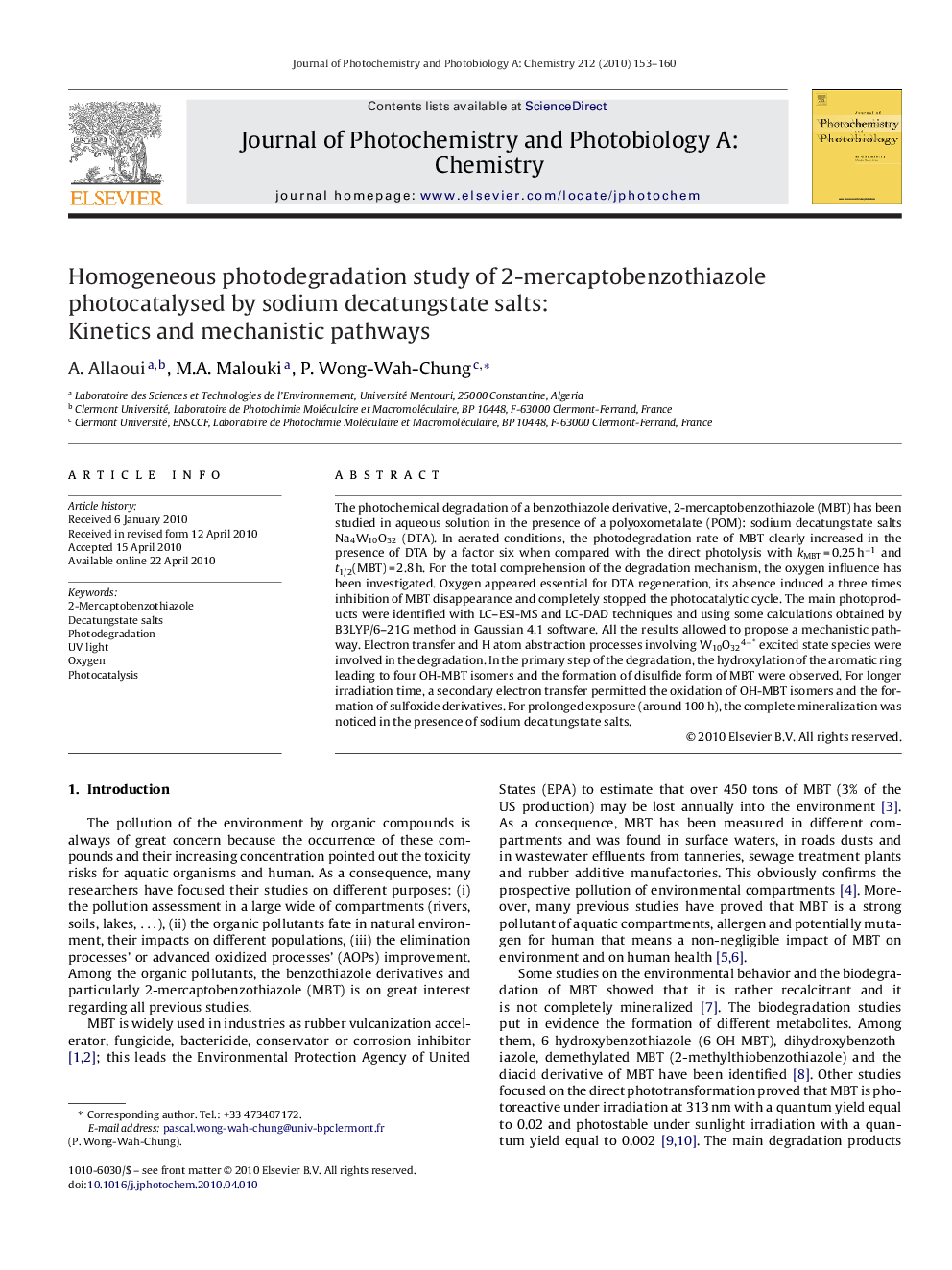| Article ID | Journal | Published Year | Pages | File Type |
|---|---|---|---|---|
| 26984 | Journal of Photochemistry and Photobiology A: Chemistry | 2010 | 8 Pages |
The photochemical degradation of a benzothiazole derivative, 2-mercaptobenzothiazole (MBT) has been studied in aqueous solution in the presence of a polyoxometalate (POM): sodium decatungstate salts Na4W10O32 (DTA). In aerated conditions, the photodegradation rate of MBT clearly increased in the presence of DTA by a factor six when compared with the direct photolysis with kMBT = 0.25 h−1 and t1/2(MBT) = 2.8 h. For the total comprehension of the degradation mechanism, the oxygen influence has been investigated. Oxygen appeared essential for DTA regeneration, its absence induced a three times inhibition of MBT disappearance and completely stopped the photocatalytic cycle. The main photoproducts were identified with LC–ESI-MS and LC-DAD techniques and using some calculations obtained by B3LYP/6–21G method in Gaussian 4.1 software. All the results allowed to propose a mechanistic pathway. Electron transfer and H atom abstraction processes involving W10O324−* excited state species were involved in the degradation. In the primary step of the degradation, the hydroxylation of the aromatic ring leading to four OH-MBT isomers and the formation of disulfide form of MBT were observed. For longer irradiation time, a secondary electron transfer permitted the oxidation of OH-MBT isomers and the formation of sulfoxide derivatives. For prolonged exposure (around 100 h), the complete mineralization was noticed in the presence of sodium decatungstate salts.
